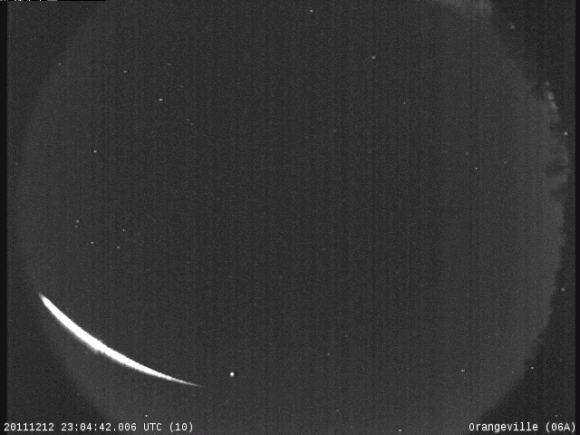Ranging in size from microscopic space dust to mountainous asteroids, trillions of meteoroids zing through the inner solar system on a daily basis. What are the odds that five of them would cross the same point in space? Pretty good, actually. In fact, it happened just last night. Regard the following orbit diagram, then read on for an explanation:

© MSFC Meteroid Environment Office
These are the orbits of five objects that hit Earth on the night of Dec. 7/8. NASA's
All Sky Fireball Network recorded the meteoroids as they disintegrated in the atmosphere over the United States, each one producing a bright fireball. Note how all the orbits converge on a single point--our planet.
Every night the network's cameras scan the skies over the United States, forming an inventory of what hits the atmosphere. Combining images from multiple cameras, network software rapidly calculates the basic parameters of each interloper: orbit, speed, disintegration height, and more. At the moment, cameras are located in only four states (New Mexico, Alabama, Georgia, Tennessee), but the network is expanding to provide even better coverage.
Soon we'll see just how congested our intersection in space really is.

